 Yesterday afternoon, sometime after 2 p.m., Vita Brevis marked a major milestone in the life of a blog with its one-millionth page view. Since it officially launched on 10 January 2014, with Robert Charles Anderson’s Deep Puritan Roots post, Vita Brevis has published almost 650 installments[1] by 73 bloggers, with categories ranging from American History (there are 258 blog posts in this area) to Genealogical Writing (89) to Technology (30). Continue reading A vote of confidence
Yesterday afternoon, sometime after 2 p.m., Vita Brevis marked a major milestone in the life of a blog with its one-millionth page view. Since it officially launched on 10 January 2014, with Robert Charles Anderson’s Deep Puritan Roots post, Vita Brevis has published almost 650 installments[1] by 73 bloggers, with categories ranging from American History (there are 258 blog posts in this area) to Genealogical Writing (89) to Technology (30). Continue reading A vote of confidence
‘The lofty heights’
[Author’s note: This series of excerpts from Regina Shober Gray’s diary began here.]
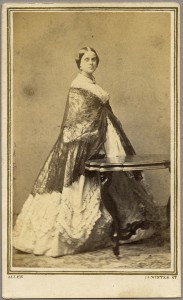
Hof Ragaz, Ragaz, Friday, 5 July 1878: We reached this place,[2] Wednesday p.m., July 3d, having left beautiful “Serbelloni” on Monday at 10 a. m. We had a lovely 2 hour sail to Colico where we took our last look at enchanting Lake Como – and where our commodious Berlino & four horses and round, rosy, jolly young coachman awaited us, and gave us a hot drive of 3 hours to Ghiavenna,[3] where we passed an anxious night at the “Conradi,” a very good hotel. The drive & jolting put the Dr to a good deal of pain & I feared he would not be able to proceed next day; but he did go on. Continue reading ‘The lofty heights’
Birth order vs. will order
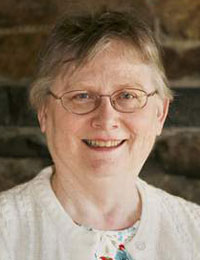 In the Early New England Families Study Project sketch for Joseph Andrews of Hingham, I included a commentary about the problem I was having establishing the birth order for Joseph’s children. Recently, an inquirer wondered why I had not used the order the children are named in Joseph’s will.[1]
In the Early New England Families Study Project sketch for Joseph Andrews of Hingham, I included a commentary about the problem I was having establishing the birth order for Joseph’s children. Recently, an inquirer wondered why I had not used the order the children are named in Joseph’s will.[1]
Heirs can be listed in a will in any way the testator wants, but there are legal precedents that encourage listing children by birth order. Sometimes all the sons are named first, then all the daughters, and sometimes they are intermixed. Sometimes the testator specifies “eldest son, second son,” but others do not, and while we might assume birth order, it is not guaranteed. Continue reading Birth order vs. will order
ICYMI: A helping hand
[Editor’s note: This blog post originally appeared in Vita Brevis on 30 March 2015.]

Before I began researching my ancestry, I was overwhelmed by the undertaking. It seemed like an impossible task that would take up all my time — trying to make sense of all those great-great-great-greats with their shifting residences, repeating names, and overlapping dates. I’ve always been bad with numbers and dates, and tend to be distracted by anything new and exciting, so my past attempts at uncovering information about my ancestors have resulted in a confusing game of Internet hopscotch through random records I couldn’t really understand concerning people to whom I may or may not have been related. I had convinced myself that I was uniquely ill equipped for genealogical research. Continue reading ICYMI: A helping hand
A New England Hogwarts
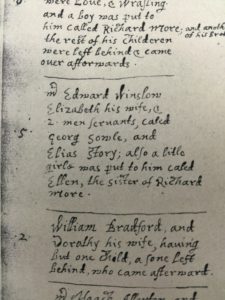
In 2014, I wrote a blog post about the greatness that is J.K. Rowling. My main point was that, as in your own genealogical research, a properly told story – whether fiction or non-fiction – demands a complex, well-researched treatment. Where and when were your characters born? Who were they named after? What nationality/ethnic group do your characters identify with? What is their religion or family tradition?
For most, the influence of family (both real and imagined) will play a significant role in the narrative of your story. Therefore, if you wish to tell your story in the most accurate way, it is important to research and document those who have come before you. This will help to place them into the larger narrative of their family history. Continue reading A New England Hogwarts
Re-enacting history
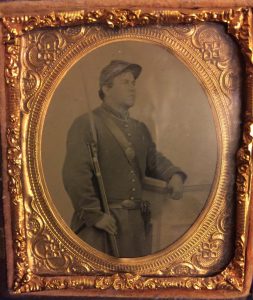
I have questioned published history my whole life, and have sought out the stories from the documents or in some cases the source. I was the obnoxious eight-year-old kid who went to Plimouth Plantation and posed my questions to the re-enactor John Alden. I did not ask standard questions like the rest of my class: “What do you do for work?” or “How do you survive without television?” I inquired of Mr. Alden who his parents were and where he was born exactly. The evil look I received back from the modern Mr. Alden was almost as bad as the glare from my second grade teacher before she grabbed me and led me out of the Alden home. Continue reading Re-enacting history
The secret history
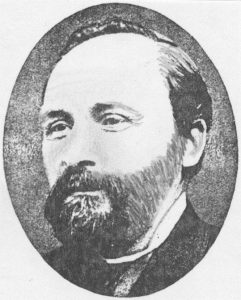
If you have been binge watching the latest season of Orange is the New Black, you may have learned an interesting bit of trivia, courtesy of the Martha Stewart/Paula Deen-inspired new character of Judy King, who mentions that Wonder Woman creator William Moulton Marston (1893–1947) had “two wives” simultaneously.
As explored in Jill Lepore’s The Secret History of Wonder Woman, Marston married Elizabeth Holloway in 1915 and had two surviving children with her; Marston also lived in an extended relationship with Olive Byrne, by whom he had two more children, who were then adopted by William and Elizabeth Marston. Continue reading The secret history
‘He felt perfectly well’
[Author’s note: This series of excerpts from Regina Shober Gray’s diary began here.]

“Good news indeed! which made even the raging storm bright to us; and which tided him well through it – of course it could not last so… – and he has been very wretched since, but will rally, I hope, now that the worry & bustle of landing [in England] is over.”[2] Continue reading ‘He felt perfectly well’
Beyond price
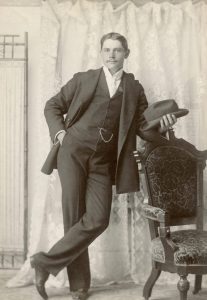 Some photographs of our ancestors are beyond price. This one of my mother’s father, Ed Hawes, was taken in 1899, when he was still planning on a Naval career. Unfortunately, as a midshipman, he was thrown down a hatch in a hazing incident that shattered his hip.
Some photographs of our ancestors are beyond price. This one of my mother’s father, Ed Hawes, was taken in 1899, when he was still planning on a Naval career. Unfortunately, as a midshipman, he was thrown down a hatch in a hazing incident that shattered his hip.
Ed, the son of a street railway motorman and mechanic, had inherited his father’s skills with tools, so with the Navy out of the picture, he started working in a bicycle store – the same store, the story goes, as Peter Fuller (son of Massachusetts Governor Alvan Fuller and later a millionaire Cadillac dealer). As a young man at the turn of the twentieth century who knew how to drive an automobile, Ed was hired as chauffeur by Harrison Harwood, owner of the H. Harwood and Sons Baseball Factory in Ed’s home town of Natick, Massachusetts. Continue reading Beyond price
A beautiful view
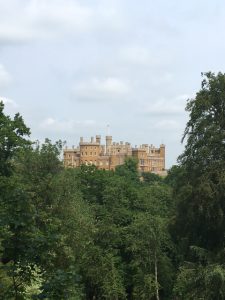
My Simons ancestors came from a picturesque region in England known as the Vale of Belvoir (pronounced “Beever,” and meaning “beautiful view,” from the French), found at the intersection of three counties: Leicestershire, Nottinghamshire, and Lincolnshire. I recently had the pleasure of visiting the Vale with my uncle, Herbert Simons, to become acquainted with the towns and villages where our paternal ancestors lived from time immemorial. Records of the Simons family (variously spelled Simon, Simond, Symonds, Simons, etc.) stretch back in the Manor of Langar as far as 1340, when it was noted that William Simond “has one messuage and one bovate for homage and fealty and pays five shillings at Saint Martin’s and Pentecost …” Continue reading A beautiful view